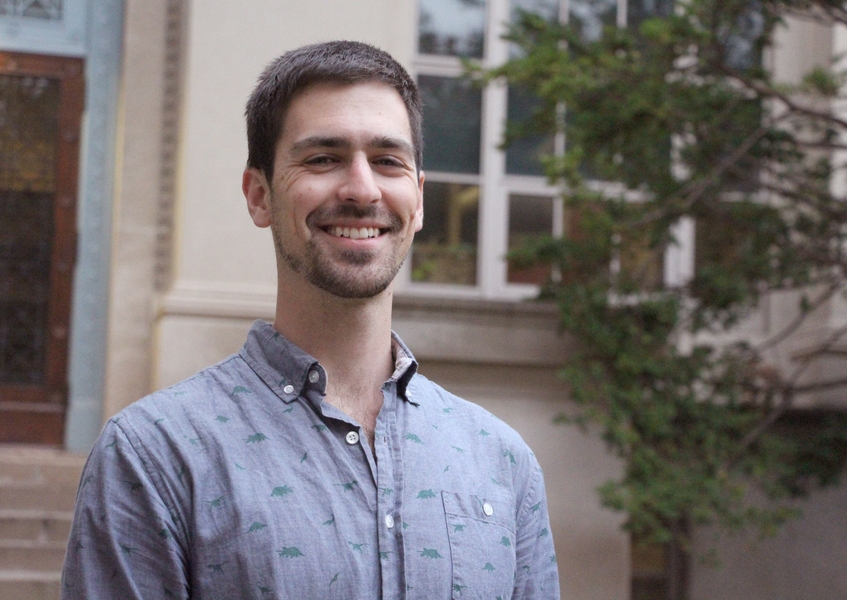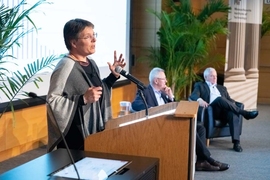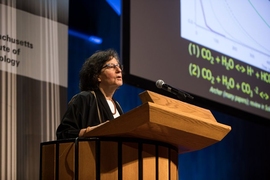As a master’s student in the Department of Aeronautics and Astronautics and the Technology and Policy Program at MIT, Brandon Leshchinskiy’s ultimate goal is to “build AI tools to adapt to climate change and the educational tools to stop it.” As part of his graduate thesis, in collaboration with MIT Portugal and EarthDNA, both led by Dava Newman, the Apollo Professor of Aeronautics and Astronautics, Leschinskiy created EarthDNA’s Ambassadors, an outreach program “for the Earth, for future generations.”
The program aims to empower high school students to speak loudly and often about climate change, by leveraging the energy of college students and recent graduates who are passionate about infusing these conversations in to their local community. EarthDNA Ambassadors provides resources, including a Climate 101 presentation, email templates, surveys, and other materials to support these outreach efforts in local communities. Leshchinskiy spoke about the program in a recent interview.
Q: Why are you targeting college students and recent grads to participate in educating local high schoolers?
A: As an undergraduate, I participated in a lot of STEM outreach activities, and so I know firsthand that college students have a lot of energy to give back, and there are a lot of institutional resources available for these efforts. College students have this intrinsic capacity and desire for this type of work, so we feel that college students and recent graduates would be great emissaries in our effort.
Climate change is an issue that has become more and more of a cultural priority, especially among the younger generations. Recent UN/IPCC reports show we have roughly 10 years before climate impacts could start to spiral out of control, and I think this younger generation is much more attuned to this because we have grown up experiencing the realities of climate change. Because of this, I think young people feel disenfranchised by the status quo and are therefore much more motivated towards activism.
To that end, I think there is a much greater sense of trust between peers due to our similar shared experiences. We all understand how high the stakes are here, and I think college students or recent graduates are better able to appeal to high school students in a way that’s meaningful.
Q: What does the process look like to get involved with EarthDNA Ambassadors and what sort of activities and other resources does the program entail?
A: Our first goal is to foster a sense of community among people who are passionate about climate change, so first and foremost we encourage interested parties to join our Slack community to start the conversation. We share resources that follow the three key steps of our program: Reach out, where volunteers connect with local high schools where they want to present; Present, where they prepare and present the information in their classroom of choice; and Follow up, where volunteers follow up with teachers a day after, a week after, and a month after their presentation, collecting survey data to help us measure the impact of our program.
On our website, we offer training resources and other material for our volunteers, such as email templates for contacting teachers, presentation tips and guidelines, recordings of sample presentations, and step-by-step instructions about our “Climate 101” presentation and interactive activity.
The goal of our educational program is to present a cohesive narrative that tells the full story of climate change. Solving this problem will require interdisciplinary effort, and right now I think there is this huge misconception that climate education only belongs in science class. Don’t get me wrong — climate-change education absolutely belongs in a science classroom. But history teachers can provide valuable perspective on past interactions between humans and our home planet; visual arts teachers can foster a community dialogue that captures our intimate relationship with Earth’s climate; and since a key component of climate monitoring involves working with data, climate-change education belongs in computer science and math classrooms as well. In the social sciences, climate change is a big economics problem. Economic models assume continuous growth — but they are competing against physics, which sets a clear limit due to finite resources. Physics will win. Still, if we are going to solve climate change, we have to tell the whole story by reconciling all of these perspectives.
Q: What do you hope to accomplish with this program?
A: Our goal is to broaden access to climate literacy. People tend to filter information through their values, ideologies, and experiences, but in order to make the systemic changes required, we’ll need some level of government intervention, which not all citizens are comfortable with. In general, parents do trust their kids, so if we can get adolescents to talk about the impacts of climate change on their lives, we can at least help start the conversation where there isn’t necessarily one happening right now. One of the questions we ask in the followup survey is how many times do you speak about climate change per week. Eventually we hope to see that we help foster thousands of conversations about climate change that may not have happened otherwise.









